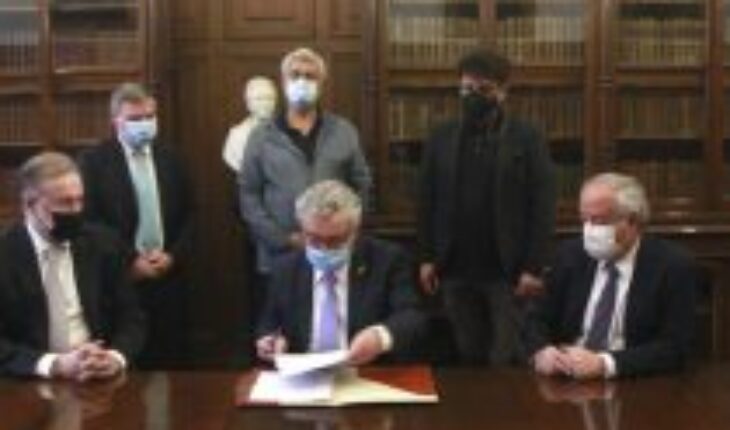It was on November 9, 1971 when the exhibition “Identifications” by the Argentine artist Ernesto Deira was inaugurated in the University Hall of the Institute of Latin American Art of the University of Chile, a collection of seven black and white oils that dealt with themes of political connotation, with characters mutilated in allusion to the death of Che Guevara and the Vietnam War.
The plan was for the works, after finishing their exhibition in Chile on November 30, to be sent to Cuba, but the agitated political climate of the moment prevented them from leaving the country. Then, with the arrival of the military dictatorship, the works were considered lost. There was even a rumor that they had been destroyed. Deira died in 1986 convinced that his work had been destroyed by the regime of Augusto Pinochet.
However, during these 50 years the works were sheltered in the warehouses of the Museum of Contemporary Art (MAC), installed on resistant wooden frames with wedges and crossbars to guarantee the correct tensioning of the canvases. Cared for and restored, the paintings remain intact and are ready for a new step: to return to Argentina with the help of the artist’s children and heirs.
This was the objective of the agreement signed by the University of Chile – represented by the rector Ennio Vivaldi – and the Deira family – in the signature of Silvina and Martín Gabriel Deira – in the presence of the ambassadors of both countries – the ambassador of Argentina in Chile, Rafael Bielsa, and the ambassador of Chile in Argentina, Nicolás Monckeberg – this Thursday, January 30 at the Central House of the campus. The event was also attended by the director of the MAC, Daniel Cruz; the dean of the Faculty of Arts, Fernando Carrasco; and the head of the Legal Advice Unit of the institution, Ignacio Maturana.
The document marks the end of a long season of talks between the parties involved, which began in 2003, when it became known that the works had survived the dictatorship and were being guarded by the MAC. The process has had the collaboration of the Embassies of Chile and Argentina. In fact, it was Ambassador Monckeberg who brought the document signed by the heirs from Argentina.
“The signing of this agreement is great news for both countries,” said Rector Vivaldi. “The University played a fundamental role in protecting the works of Ernesto Deira during the dark period of the dictatorship and also in defending the artist’s legacy. Thanks to the collaboration and the joint will to protect the heritage, the works will be able to return to their country of origin as an artistic unit and will be available to the Argentine population at the National Museum of Fine Arts of Argentina. We are also happy and honored that the Deira family gives the MAC a painting by the artist that symbolizes how during these decades of custody his work also became a memory for Chile.”
For the MAC, the act of replenishment “reinforces the role of safeguarding an acquis that contemplates part of the cultural history of our country, and in this case the history that unites us with the sister Republic of Argentina,” said director Daniel Cruz. “We firmly believe that the history and actions that sustain the replenishment agreement account for a mutual respect between the countries, the appreciation of the diversity of cultural practices that occur in our Southern Cone, and – above all – the recognition of the relevance of the work of Ernesto Deira. As a Museum of Contemporary Art we are very happy to have fulfilled our goal, and we are confident that this action reinforces our future in a context of infinite projections.”
For its part, the Deira family thanked that “after many years of well-intentioned but unsuccessful efforts, we finally came to this instance with the invaluable mediation of Ambassador Nicolás Monckeberg,” said Silvina Deira.
“As a family we are very happy, excited and excited that our father’s works will return to the country and be exhibited at the National Museum of Fine Arts. It is a debt we had with him and with the Argentines who could never appreciate them. They have great historical value, reflecting a very difficult time. We will donate from our private collection an important work to the MAC, as a sign of gratitude for having safeguarded and restored this invaluable collection,” he said.
The agreement to replace the works includes, in effect, a donation of another work by the artist from the Deira family, in gratitude for the protection of the pieces., and also the exhibition of the pieces at the National Museum of Fine Arts of Argentina. Once that cycle has been completed, the works will reach the hands of the Deira family, who undertook to maintain the entire series of seven works.





